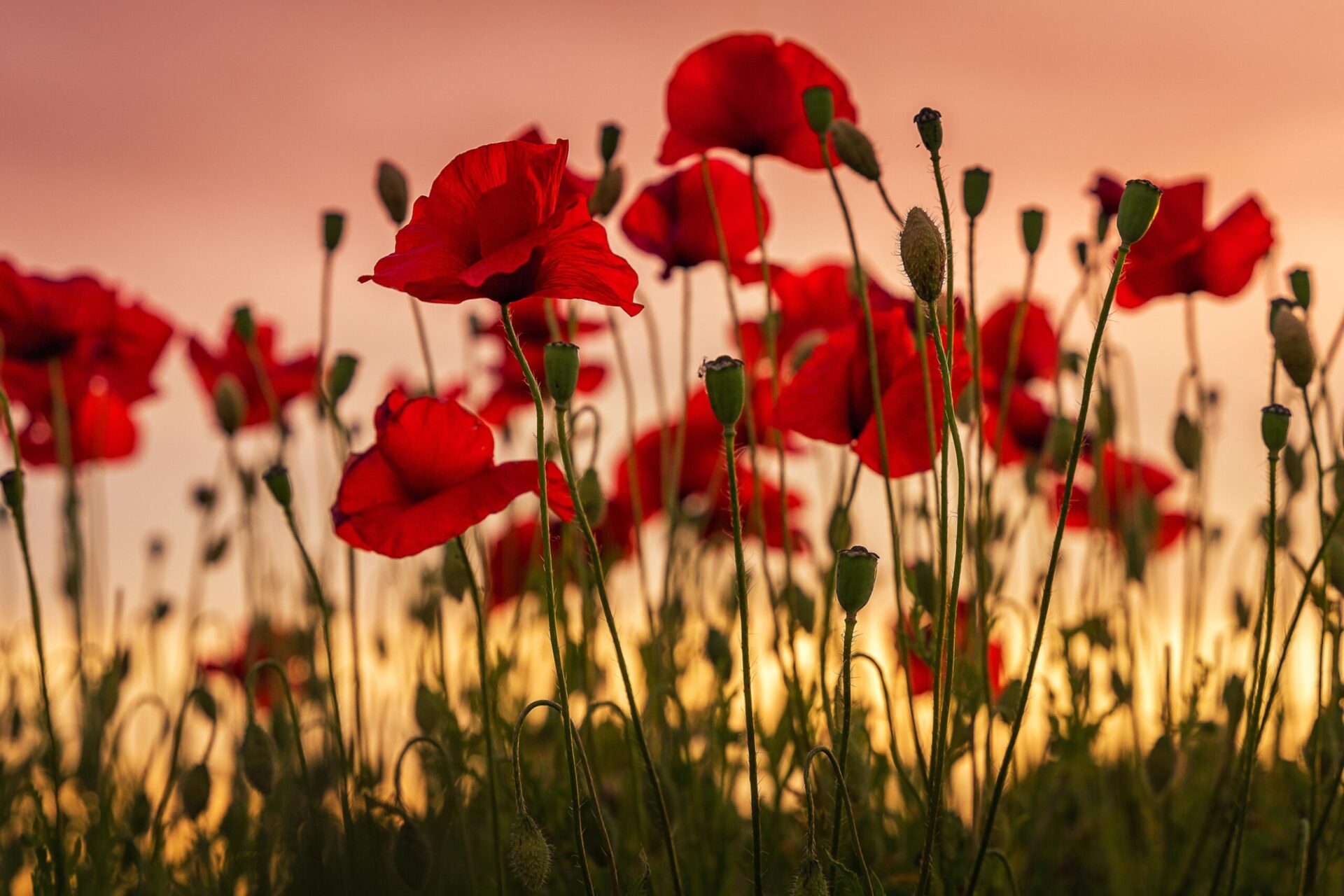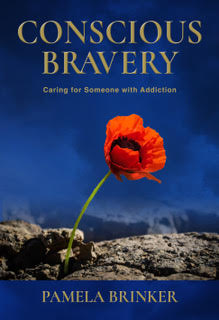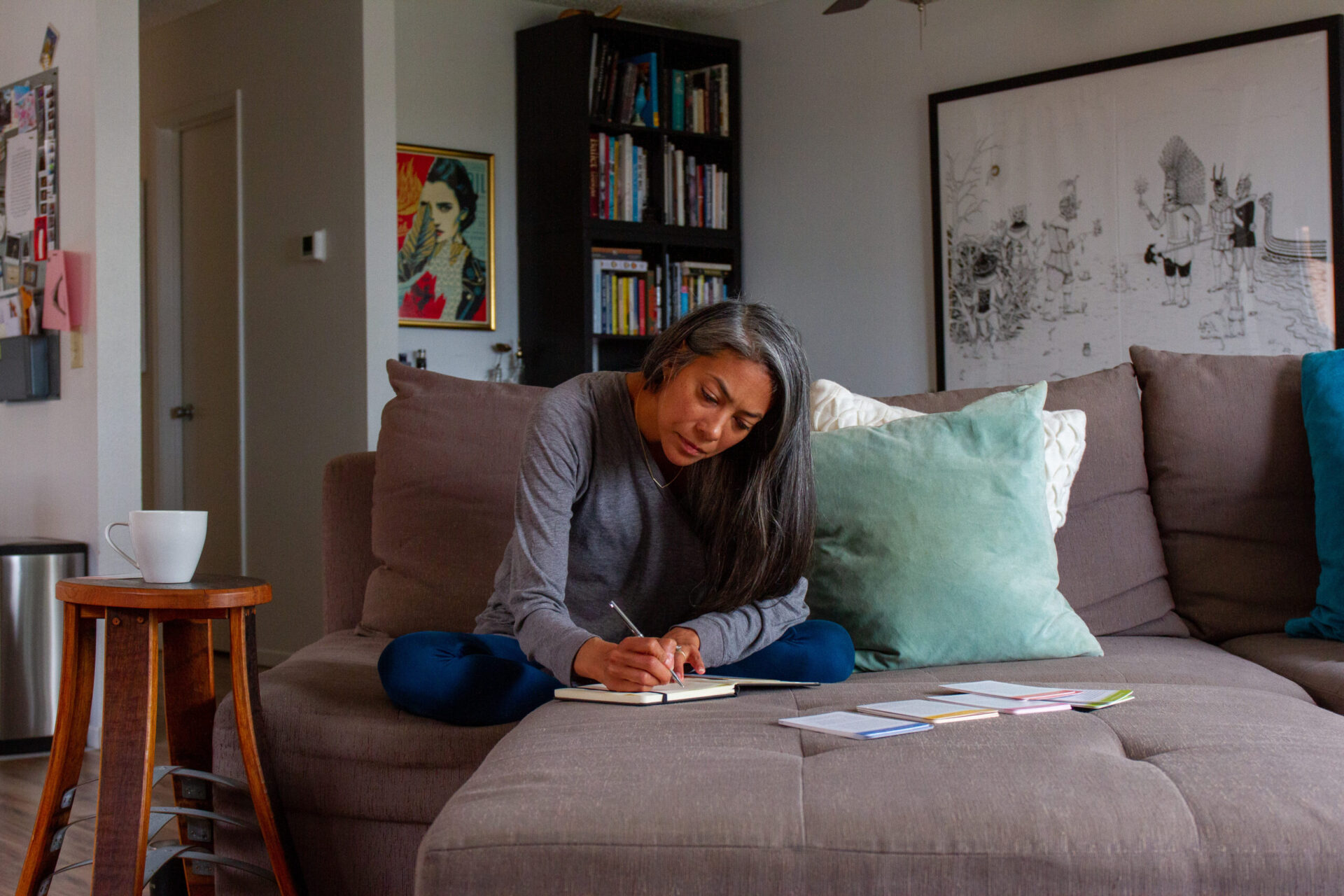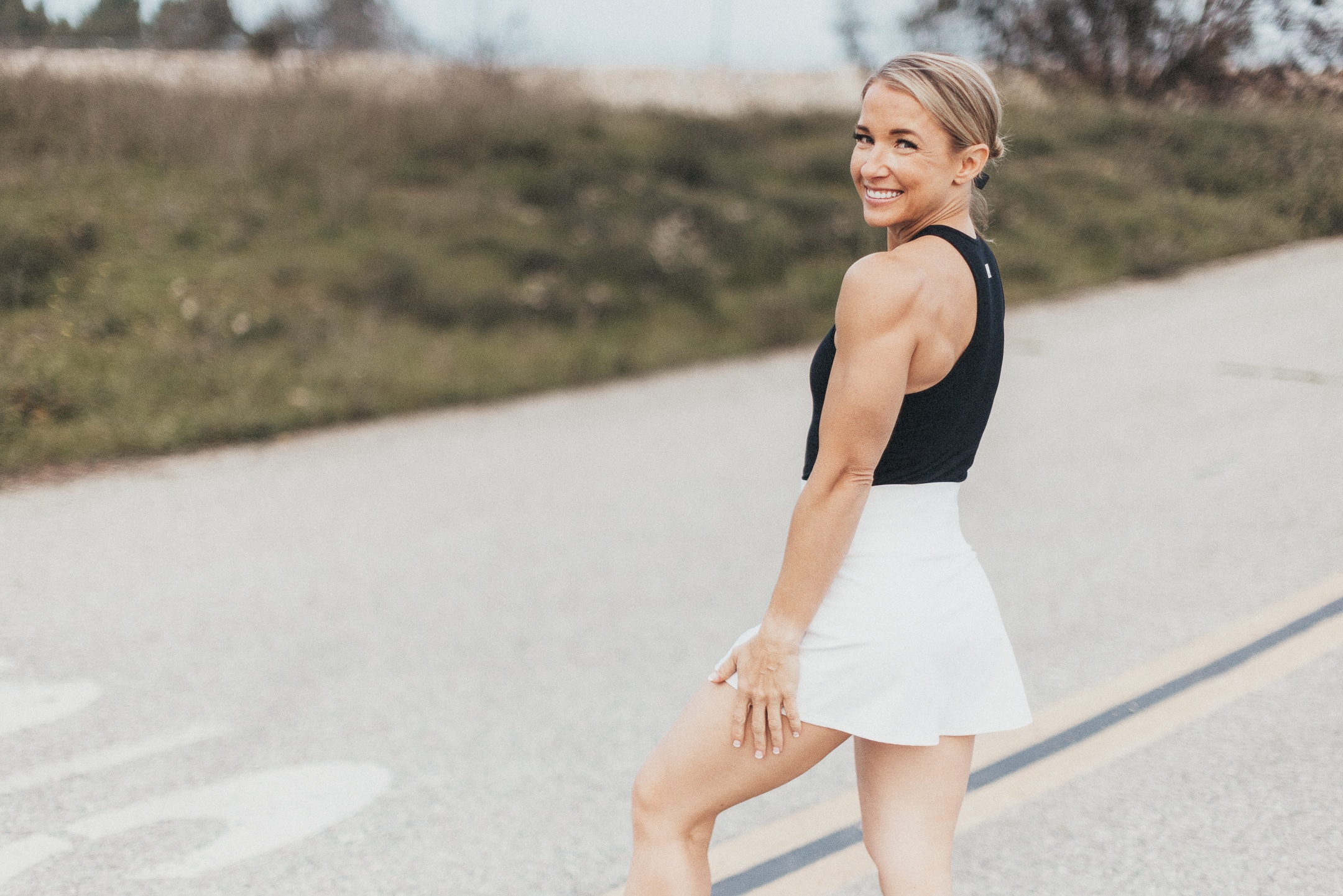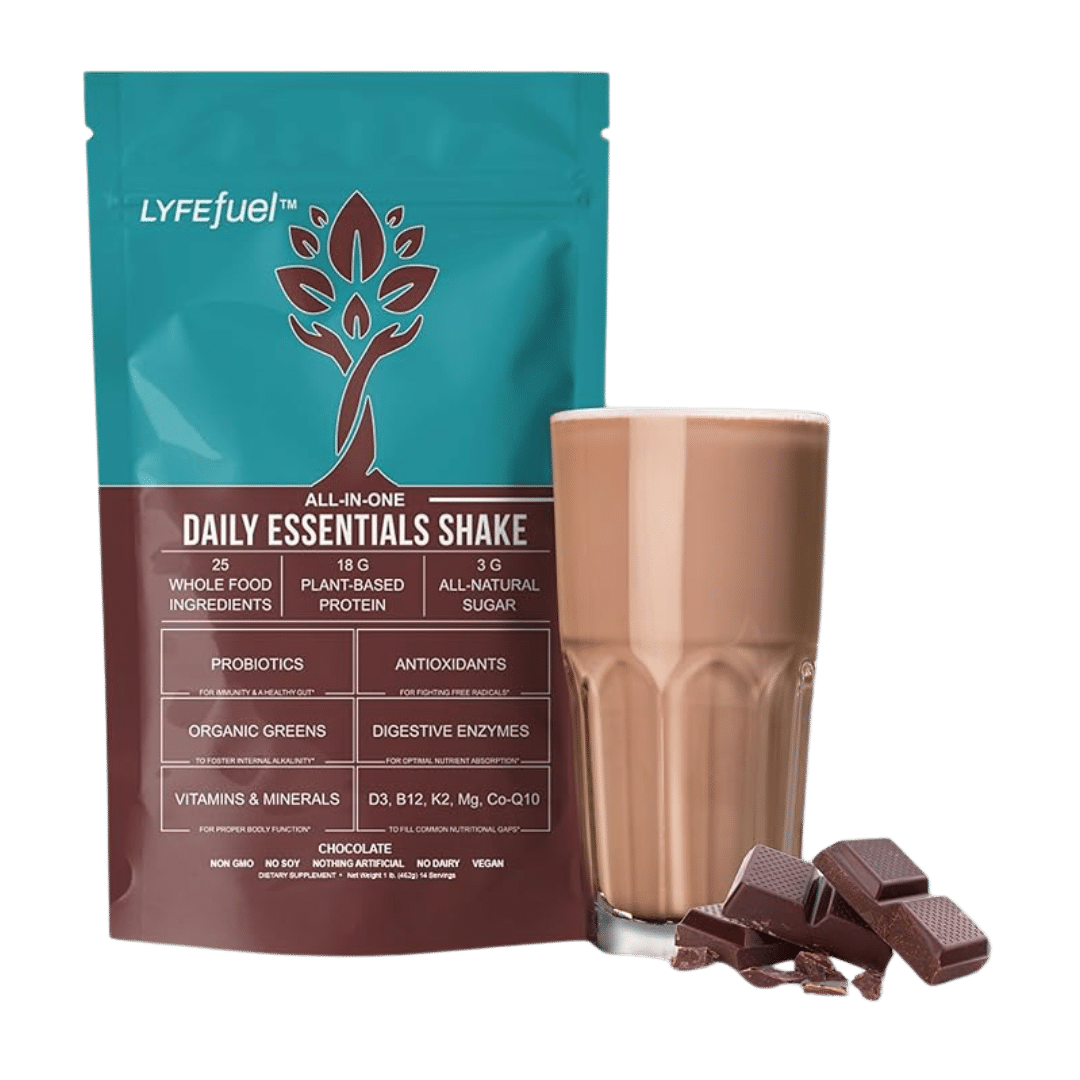Conscious Bravery : Becoming an Emotionally Agile Warrior | By Kristen Grace
Pamela Brinker is a Colorado-based integrative psychotherapist, devoted yogi, speaker and author of Conscious Bravery: Caring for Someone with Addiction. Her book was birthed out of her advocacy for people affected by addiction and mental health challenges and her own journey of loss and grief. In the pages, readers will find supportive techniques for walking alongside someone with mental health issues, self-care necessities and personal stories from Brinker.
“I wrote my book for anyone who struggles as they walk alongside someone in the wilderness of substance use issues and mental health [challenges], because it wasn’t available to me 11 years ago when I needed it,” Brinker shares. When her husband passed away 11 years ago, she found herself turning to the techniques she had taught her clients for handling grief. Brinker also had learned how to be a safe place for her loved ones who were experiencing substance use issues and mental health challenges.
Brinker distinguishes conscious bravery from courage. Conscious bravery isn’t a spontaneous act of valor; it’s total awareness of what is happening in a given moment, an understanding of what actions need to be taken and the ability to perform those actions. “Everyone is born with the seeds of bravery … but it has to be cultivated,” Brinker says. She wrote her book to teach others conscious bravery in a digestible way.
Sometimes conscious bravery is springing into action, while other times it is sitting silently and listening. “Conscious bravery can look like softness, and it can sound like stillness,” Brinker shares. Because conscious bravery is a practice of great awareness, Brinker suggests using a technique she calls the whole-being scan. It encompasses an understanding of our six realms of experience — the heart, mind, body, essence, intuition and energy.
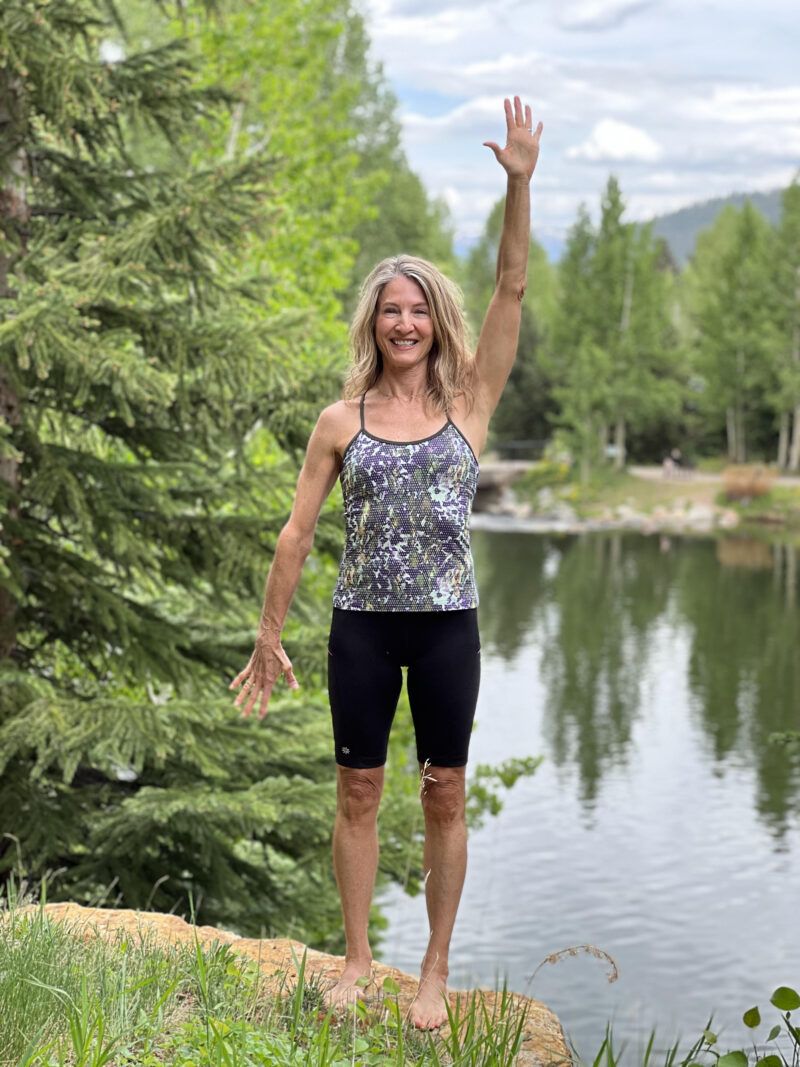
Photos courtesy of Pamela Brinker.
In Brinker’s whole-being scan, she guides people in assigning one to three words for each of the zones of experience. For example, you may think, “In my heart I feel sad and hopeful. My mind feels scattered; my body feels hot and tense. In my essence, I recognize hopelessness. My intuition is telling me to rest; my energy feels depleted.”
“Each zone might beckon for consideration or response in varying situations,” Brinker writes. In her therapy and yoga, Brinker integrates a myriad of practices for understanding and tending to your six realms. One of the practices is a yoga pose she has termed ‘earth and sky,’ her take on the traditional tadasana (mountain pose). Standing with your feet grounded and hip-width apart, reach one hand toward the earth and stretch the other hand toward the sky. Finding a breath pattern, start swimming your hands in lateral circles, so that the lower hand moves upward and the higher hand shifts down. To complete the circle, one hand will slide past the crown, third-eye and throat chakras, while the other slides past the root, sacral and solar plexus chakras. Eventually, your hands melt to meet at your center heart chakra, palms facing each other, before completing the circle and once again reaching toward earth and sky. Continue making these circular motions with your hands for as many cycles as you wish.
While preforming earth and sky, meditate on the purpose of gracefully holding opposites. “Anchor in earth, anchor in sky. Be two places at once, and live in both,” Brinker explains. Conscious bravery often requires us to be strong and gentle simultaneously; it requires us to be an agile warrior (both physically and emotionally, as Brinker points out). Conscious bravery begs us to be adaptable on the spectrum of realities and emotions. “Suffering and happiness can abide compatibly together in your bubble of flexible presence,” Brinker writes.
The whole-being scan is integral to showing up fully for someone in the wilderness of addiction, because you have to take care of yourself before you can pour into others. Brinker emphasizes that self-care isn’t selfish, and that is it essential to being able to overcome challenges. Brinker compares self-care to the tree of life. She writes, “Care for the tree of your well-being as you would a plant in your home; you water it, nourish it, smile at it, appreciate it and learn to recognize what it needs. Decide that your tree is so important that it’s not an option to wait until it’s withering or injured to tend to it.”
To learn more about Brinker’s tools, find her book and learn how to become an emotionally agile warrior through conscious bravery, visit pamelabrinker.com.
 Kristen Grace ardently loves all forms of storytelling. Writing and reading light her up, and she feels immensely lucky to contribute to culture through her writing. In addition to her journalism, Kristen is digital editor over Covered Bridge, Spoke + Blossom and YOGA + Life magazines. She enjoys spending time in nature, especially on picnics as she is also a foodie and amateur baker.
Kristen Grace ardently loves all forms of storytelling. Writing and reading light her up, and she feels immensely lucky to contribute to culture through her writing. In addition to her journalism, Kristen is digital editor over Covered Bridge, Spoke + Blossom and YOGA + Life magazines. She enjoys spending time in nature, especially on picnics as she is also a foodie and amateur baker.
Originally published in Winter + Spring 2022-23 issue.
Not every nutrition shake is created equal and LyfeFuel’s is top tier. Made with 50+ whole food nutrients [...]

Subscribe to Our Tribe
Stay up to date with Y+L News, Events and special announcements.





